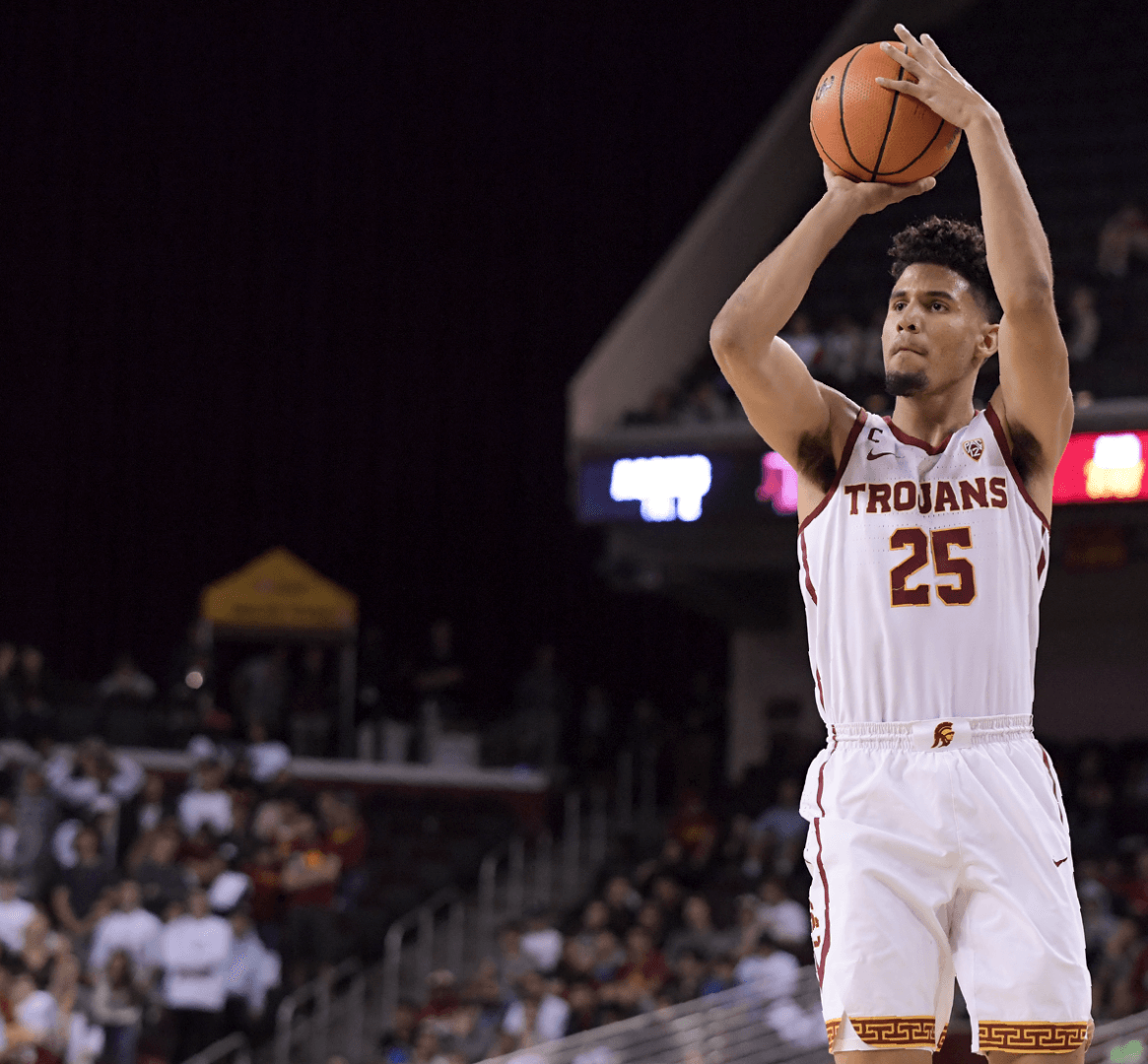Taking a Shot
In the spirit of March Madness, Daniel Hagen, a basketball fan with a master’s degree in biomedical engineering and now a second-year Ph.D. student in the Brain-Body Dynamics Lab at USC, broke down the biomechanics of the free throw. His work, done with lab
Director Francisco Valero-Cuevas, has potentially important implications for what we know about our own motor-control strategies, how we explain the emergence of disability, and how we might help stroke victims or people living with disability move better in everyday life.
In a paper published in the Journal of Biomechanics in May 2017, titled “Similar movements are associated with drastically different muscle contraction velocities,” Hagen and Valero-Cuevas, USC Viterbi professor of biomedical engineering and biokinesiology and physical therapy, investigated how a basketball player coordinates a perfectly calibrated and complex system of articulated limb segments and muscles capable of moving in infinite ways in the plane of the free throw.
“For us to move,” explained Valero-Cuevas, author of the textbook “Fundamentals of Neuromechanics,” “we have to control many more muscles than we have joints.”
Imagine you were a marionette, like Pinocchio, with more strings attached than you have hinges. Historically, scientists have called this the redundancy problem — where there are many possible combinations of string (i.e., muscle) forces that can produce the same behavior.
“Such redundancy problems are important in the fields of robotics and control, and have been applied to understand how we activate individual muscles,” Hagen said.
In theory, redundancy should give you flexibility to learn one way to move, and then simply play it back, right? “But then,” Valero-Cuevas said, “why is it that so few of us can move repeatedly and accurately time after time, and make millions of dollars at it? Why does it take us our entire childhood to hone a free throw, or to learn to move well, for that matter?”
To answer these questions, Hagen and Valero-Cuevas used concepts from differential geometry and computer simulations to follow-up on physiological concepts first raised in the 1890s by Sir Charles Sherrington, one of the founders of neuroscience. Simply speaking, they turned the problem on its head.
“Biomechanically, the redundancy in muscle forces is only half the story,” they write in their paper. “When you move, the lengths of all the muscles that stretch are fully defined by the rotations of your joints — so different movements look very different to your muscles.”
So, for a given trajectory, there is no redundancy at the level of muscle lengthening. You must precisely silence stretch reflexes at the level of the spinal cord to follow a given trajectory smoothly and repeatedly. “Any one muscle that fails to lengthen appropriately will trip you up,” Hagen said.
To test this, Hagen used a detailed computer model of the human arm to look at how quickly muscles lengthen — and therefore how precisely the spinal cord must regulate such reflexes — for 100,000 different feasible shoulder, elbow and wrist joint rotations that produced successful free throws.
A lot of free throw styles look the same, but redundancy tells us there are an infinite number of ways you can move your joints to put the ball in the net.
“Each movement exhibits a unique muscle velocity profile, requiring the muscles used for this task to lengthen or shorten with different required rates in order for the throw to be smooth,” Hagen said.
Added Valero-Cuevas: “A type of trade-off happens for each trajectory you choose. They each impose very different constraints on the neural control, on the spinal cord. The inevitable inaccuracies in our neuromuscular system will make some free throws much more prone to disruption — to missing the shot — than others.”
How might this understanding apply in real life?
Say you are recovering from a stroke and have to relearn basic movements. “What if I could tell you, in simple terms you can apply, that trajectory X might be easier for you to follow smoothly?” Hagen said. “Maybe you could try it and see if it improves the way you move. This kind of categorization of movements could help find classes of movements that are smoother, easier or less costly — potentially improving your quality of life.”




